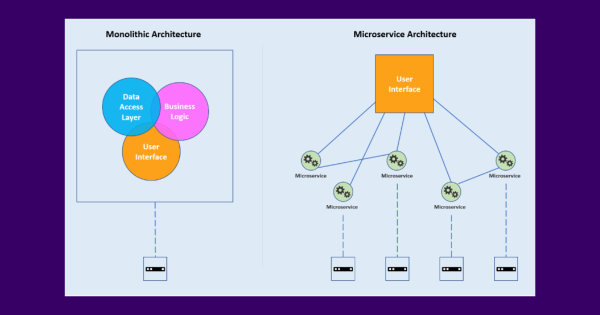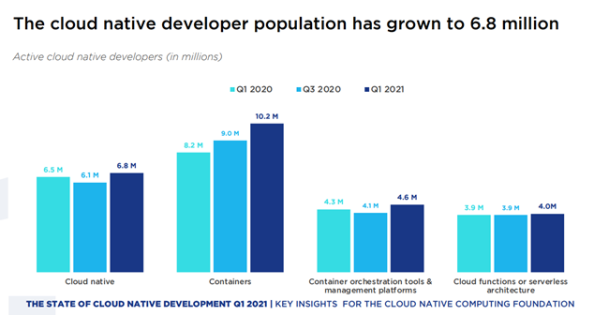Just starting your digital transformation journey? Haven’t heard of Cloud Native? Cloud native capabilities increase your company’s innovation output and speed up your development team’s productivity. The development increases business velocity, delivering more features faster to their customers. Evidently, this will help your company gain a huge competitive advantage through automation and scalability that cloud native technologies like Kubernetes and Containers offer. As a result, transforming your business to become more agile.
Cloud Native solutions can solve cost problems due to the need to provision everything for the maximum capacity required, handle high load on Black Friday and avoid hardware resources staying idle for the rest of the year by scaling up and down. Hence, going Cloud Native gives an organizational benefit on how software is delivered, which is way faster on the cloud than offline methods.
What is Cloud-Native?
Whether public, private or hybrid cloud, cloud-native technologies offer a different approach to build and run applications. Cloud-native applications are made to reside in cloud ecosystems. On the other hand, cloud enabled solutions are created for deployment in traditional data centers. Furthermore, Cloud-native applications are quick to implement, involve lower hosting expenses, require cheaper licensing, and storage. Cloud Native Architecture includes Cloud Infrastructure & Platforms, strong DevSecOps culture, Microservices, lightweight Containers, Kubernetes, CI/CD, and APIs. Unlike monolithic architecture in conventional applications, Cloud-Native applications are separate microservices deployed in cloud ecosystems.
- Cloud infrastructure includes hardware, storage, virtualization software, services, servers, networking, and tools for orchestration which enable a cloud computing model.
- DevSecOps is a cultural change in cloud-native application development. This allows for rapid, frequent, and consistent software development, quicker release of updates with security in mind and no impact on end-users. Engineering teams work on their own part of the functionality through secure coding and better evaluation and release process. The success of implementing cloud native Technology, Security and DevOps best practices into your organization depends a lot on your existing company culture.
- Microservices are small services or applications that operate separately and independently from each other. Each Microservice belongs to a certain development team working at their own pace to create, deploy, and scale a particular service in a programming language of their choice. Microservices communicate between each other using Application Programming Interfaces (APIs) and standard protocols.

- Containers are lightweight and used to package applications. Moreover, they offer isolation for microservices which are highly accessible and portable from one environment to another. Additionally, they are also scalable and fast to create or scrap, which makes building and running microservices much easier. Docker is used to build containers and used as a container runtime. Container Orchestration helps automating deployments, scaling, managing large number of microservices and maintaining their lifecycle. Kubernetes and Docker Swarm are examples. Kubernetes has won the orchestration war and all major cloud providers support Kubernetes with easy to install solutions.
Benefits of Going Cloud Native
- Automated Deployments increase Agility and Productivity using DevOps, GitOps and automated Continuous Integration Continuous Delivery (CICD) pipelines. In turn, these help to test and ship new functionalities and updates to production/customers in short ongoing cycles.
- Scalable, Elastic, Reliable, Highly Available with Reduced Downtime allowing better utilization of resources, better Quality of Service (QoS) and more precise Service Level Agreements (SLA).
- Disaster Recovery (Automated patching, back-ups, updates, and quicker recovery & rollback), and specialized Security Scanning & Inspection Tools.
- Lower Running Costs with a pay-per-use model, which shifts spending from upfront Capital Expenditure (CAPEX) to Operational Expenditure (OPEX) where the Total Cost of Ownership (TCO) will be low.
- Top Talent is attracted and retained, which results in better products and brings more innovation for your business.
- Vendor lock-in is reduced giving better choice of tools, product offerings, compliance, or integration without being stuck with vendor specific or legacy offerings.
- Reduced Time to Market which is one of the top goals for businesses, where reducing the time necessary to roll out a product offers a competitive advantage.
- Straightforward Infrastructure Planning, Provisioning, Management & Governance. The growing popularity of cloud-native platforms and Infrastructure as Code (IaC) allows companies to set up infrastructure quickly and better utilize resources.
- Monitoring solutions must manage more dynamic services with containers and microservices. Cloud native applications generate extra metrics and data from containers running at scale and native to containerized environments.
- Reduce Costs by shifting budgets from expensive ecosystems working non-stop to new functionality roll-out.
- Enhanced flexibility to make improvements in real-time using a cloud-native model where Ad-hoc performance changes with a cloud-native approach offers businesses satisfy customer evolving demands.
- Improve Customer Experience allowing businesses to create a competitive edge and offer solutions that reflect their customer evolving demands, and customer-centric experience.
The Cloud-Native Developer Population Growth

https://www.cncf.io/wp-content/uploads/2021/12/Q1-2021-State-of-Cloud-Native-development-FINAL.pdf
To Sum Up
Going cloud native is a mindset and a continuous process. It is high time to embrace a cloud native mindset and approach for digital transformation. This can be done by designing and building your applications in a new way. Do not worry about taking that first step to introduce automation, DevOps, and cloud native approach to your digital transformation journey. Small steps towards Cloud Native digital transformation make a massive impact collectively.
Want to work with latest technologies?
Check out our open opportunities at Careers | IFS.
Blog by: Asela Damian Perera, Lead Software Engineer – IFS R&D – Platform – Infrastructure & Framework.
If this blog has been of interest, please let me know what you think in the comments box below or feel free to reach out via LinkedIn.